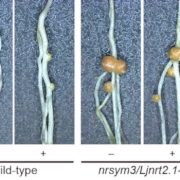
Two ABA-responsive transcription factors reset the requirement for vernalization by re-activating FLOWERING LOCUS C in embryos
Xu et al. identify two transcription factors that activate FLOWERING LOCUS C during embryogenesis, thus re-setting the requirement for vernalization. https://doi.org/10.1093/plcell/koac077
By Guokai Xu, Zeng Tao and Yuehui He
Peking University Institute of Advanced Agricultural Sciences
Peking-Tsinghua…
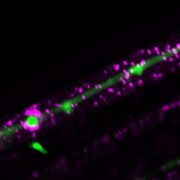
Mitochondrial ROS promise broad-spectrum disease resistance
Yang et al. identify a connection between a mitochondrial RNA-processing factor and plant disease resistance. https://doi.org/10.1093/plcell/koac082
Yang Yang and Weixing Shan
State Key Laboratory of Crop Stress Biology in Arid Areas and College of Agronomy, Northwest A&F University, Yangling,…
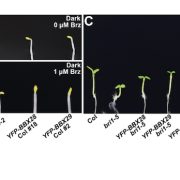
A new link between light and brassinosteroid signaling
Cao et al. demonstrate that the photomorphogenic repressors BBX28 and BBX29 enhance brassinosteroid signaling to promote hypocotyl elongation and cotyledon closure.
By Jing Cao and Fang Lin
Background: Light signals and brassinosteroids (BRs) are external stimuli and internal cues, respectively,…
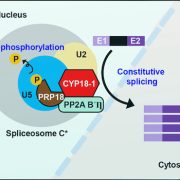
A spliceophilin helps Arabidopsis adapt to heat stress
Jo et al. uncover the role of a spliceosome component in removing retained introns in Arabidopsis in response to heat stress https://doi.org/10.1093/plcell/koac084
Background: Alternative splicing plays a key role in abiotic stress responses in plants, especially responses to heat stress. The spliceosome…
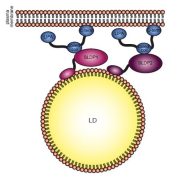
Getting in touch – when membranes meet
Krawczyk et al. describe a tethering complex that anchors a subset of lipid droplets to the plasma membrane during post-germinative seedling growth in Arabidopsis. https://doi.org/10.1093/plcell/koac095
By Hannah Elisa Krawczyk, Till Ischebeck
Background: Germinating seeds are not yet able to produce…

Pre-mRNA retention in Cajal bodies as a mechanism of post-transcriptional regulation of gene expression during development
By Dariusz Jan Smoliński, Nicolaus Copernicus University, Poland
Rudzka and colleagues characterize the retention of Sm pre-mRNAs that retain introns in Cajal bodies over the course of microsporocyte development in European larch (Larix decidua)
Background: Reports in both animals and plants have…

Keep your mouth open––the Xanthomonas effector XopS prevents stomatal closing to facilitate bacterial entry into leaves
By Margot Raffeiner and Frederik Börnke (Leibniz-Institute for Vegetable and Ornamental Crops)
Background: Like other organisms, plants defend themselves against pathogens by activating immune responses. One of the first lines of plant immunity is to block the entry of bacteria into the leaf through…
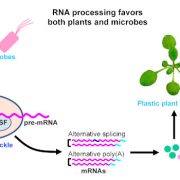
A link between RNA processing and plant immunity
Peng, D. Guo, Y. Guo, et al.
Shui Wang, College of Life Sciences, Shanghai Normal University, Shanghai, China
Background: Immune receptors recognize invading microorganisms and activate immune responses. There are two types of immune systems, innate immunity and adaptive immunity. In animals,…

How do legumes decide where to get nitrogen––from the soil or from nitrogen-fixing bacteria?
Misawa, Ito, et al. explore how nitrate transporters and NIN-like protein transcription factors repress nodulation in the presence of exogenous nitrate.
Momoyo Ito, Takuya Suzaki
Faculty of Life and Environmental Sciences, University of Tsukuba, Tsukuba, Ibaraki, Japan
Background
Through…

